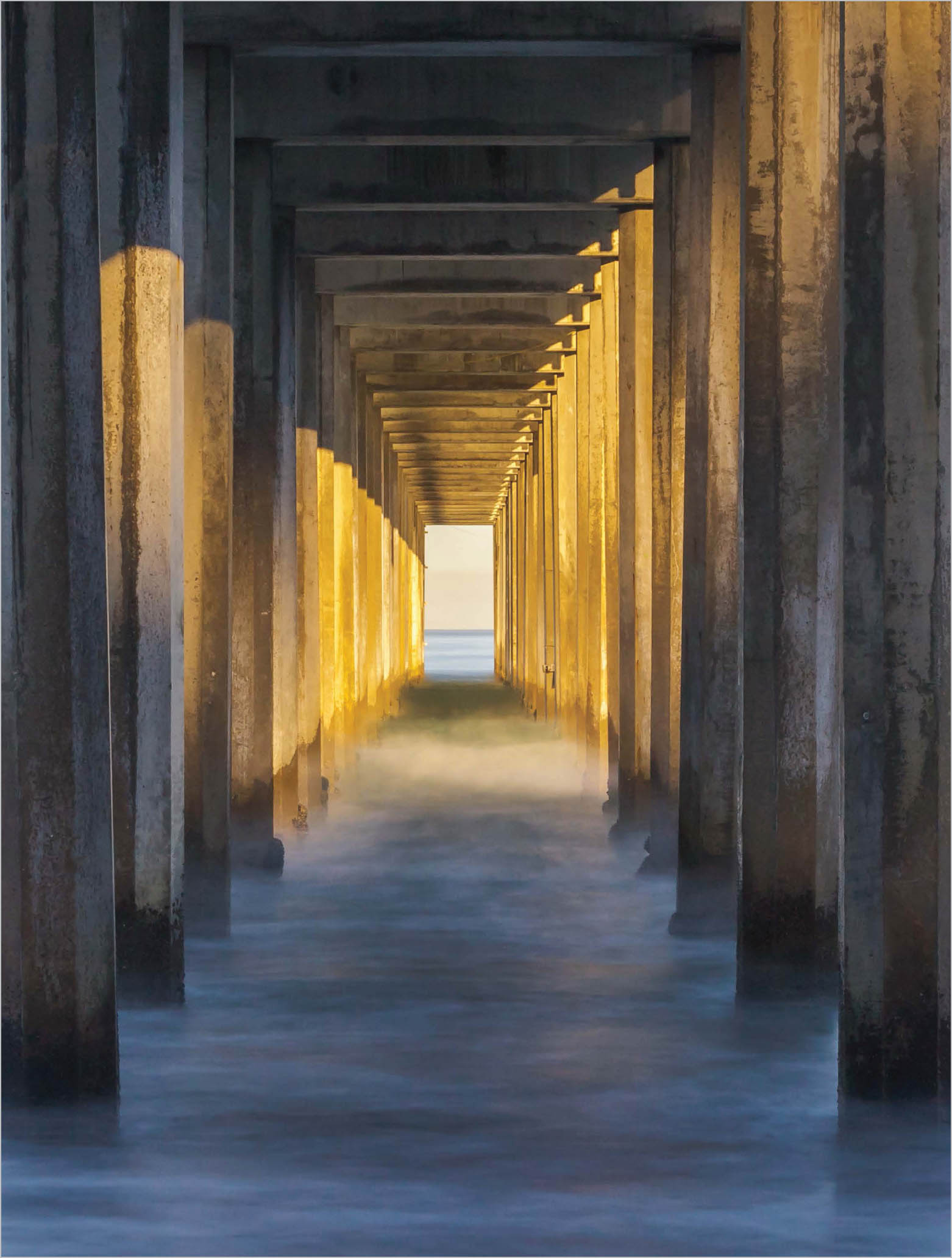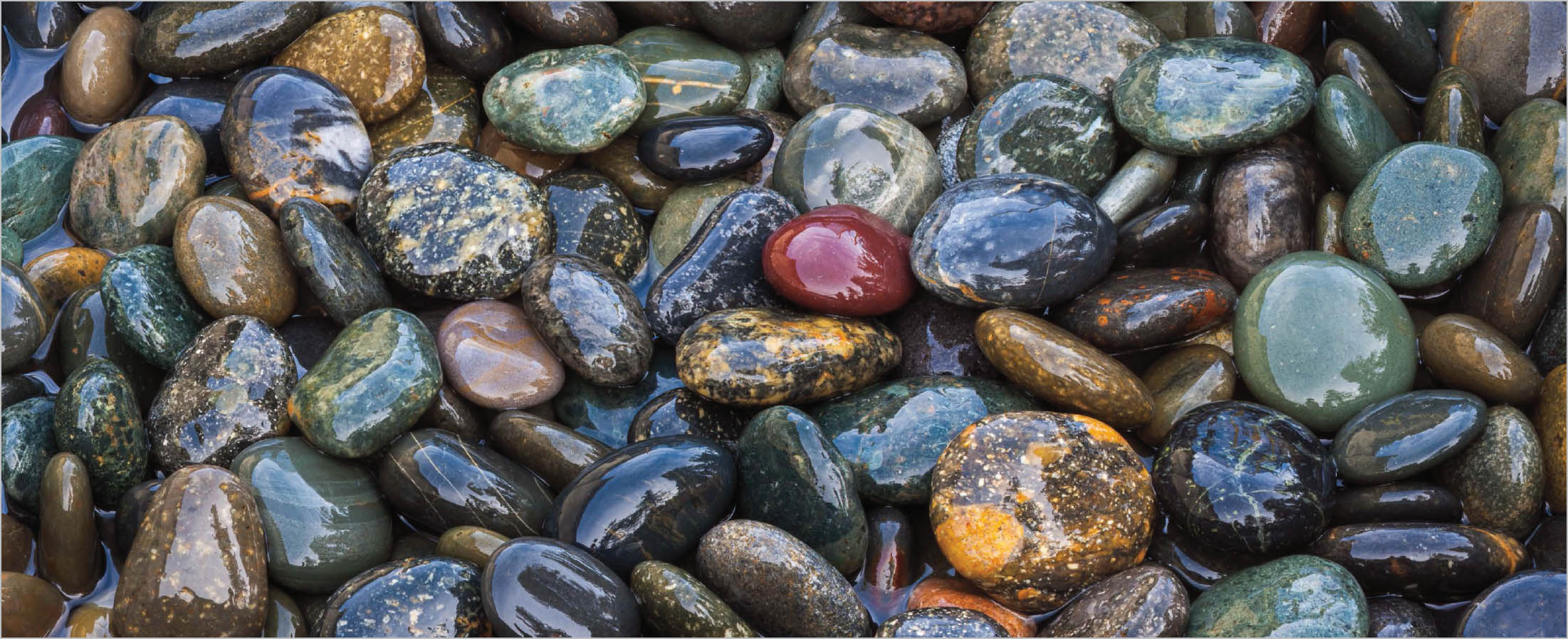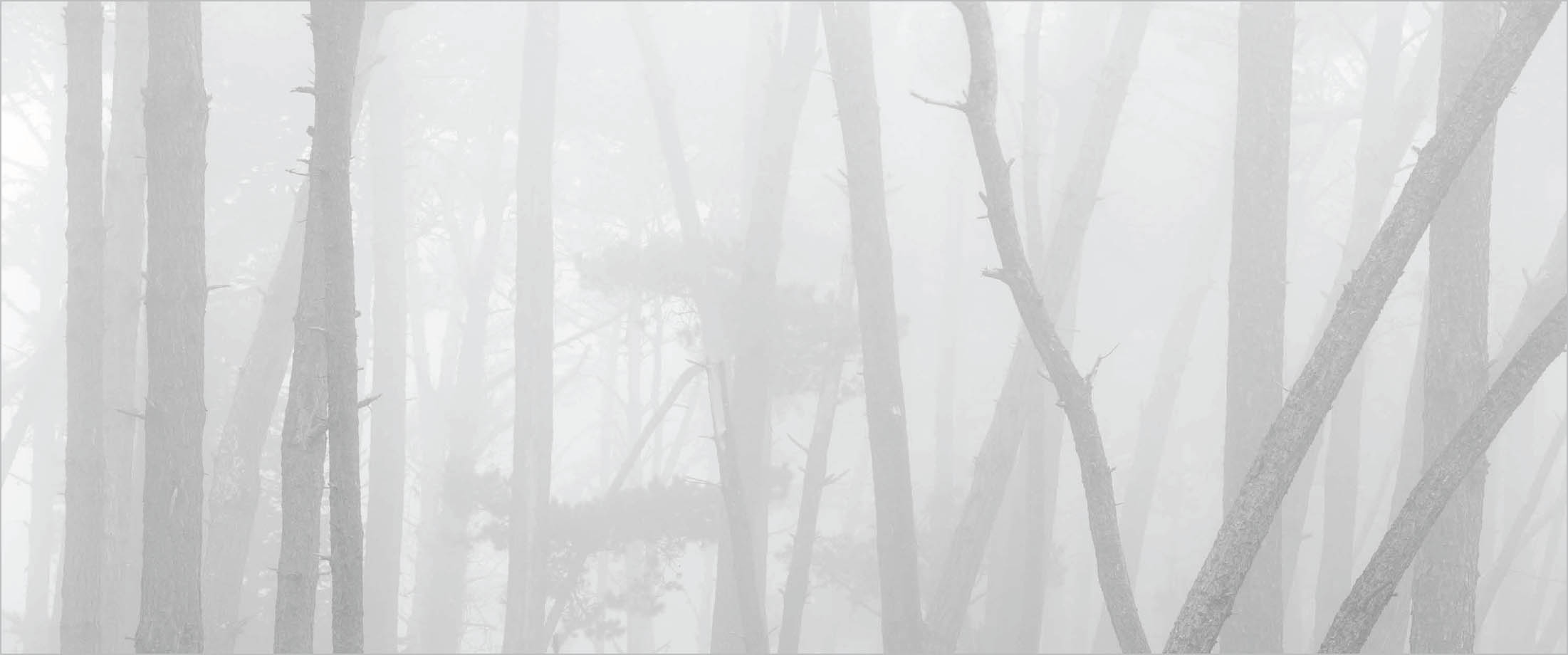GETTING OUT OF A RUT
BREAK AWAY FROM YOUR USUAL SUBJECT MATTER
During spring break when my kids were in school, my family and I enjoyed a vacation at the beach. We stayed in La Jolla, California, a place I’ve been visiting since I was a small kid. We spent one day at SeaWorld, and another day at the beach. I’ve noticed Scripps Pier in the past, and I’ve enjoyed other photographers’ images of piers. Since I’d never photographed the subject before, my main photographic focus on this trip was the pier, which was near where we stayed. I usually avoid the “presence of humans” in my photographs, but I found this to be an exciting chance to try something different.
I photographed here at sunrise earlier this day, and then again at sunset. My two favorite images are shown here. I captured the sunrise image during my first time photographing the pier. I carefully worked into the best camera position for what I had in mind, which was to contrast the symmetry of the man-made pier with the flow of the surf. For this image, I used my Singh-Ray Vari-ND filter to extend the length of the exposure to ten seconds. I waited for waves to wash up near my tripod, and then watched for the reflection to develop as the surf pulled back. Click. Timing is so critical when photographing surf. As I photographed, I watched the light and timed the exposures until I felt as though I had exhausted the session’s potential.
Sunrise at Scripps Pier | La Jolla, California | 2010
During the day, I downloaded the new images on my laptop and reviewed them in Adobe Lightroom. I often find that such a review gives me new ideas or points out any technical errors I might have made. In this case, seeing the sunrise images showed me that this location had more potential to be found at sunset, and this motivated me to return.
When I first arrived just before sunset, I knew from my morning session where I wanted to stand. I was as precise as possible to create symmetry and equal spacing between the pillars. At first, the sunlight was too harsh, and my only option was to block the sun with one of the piers. Still, the sky was so bright that capturing detail in highlights and shadows was a problem. After the sun went below the horizon, the conditions improved. I worked the situation, trying variations on timing of the wave action. In each exposure, the reflections were different.
It was nearly dark when I made the twilight image pictured on page 148. I got to the point where my meter would not give me a reading at my desired aperture of f/22 or f/32, as the in-camera meter is limited to thirty seconds. I should have had a handheld meter for this situation, but I didn’t. I could have exposed with a wider aperture, but would have lost good near-to-far sharpness on the pier posts. I quickly extrapolated a good exposure based on readings at a wider aperture. I took out my iPhone to use its timer, started the exposure (with a cable release of course), and then started the stopwatch.
I was excited about capturing these images. There is something about the “doorway” effect at the end of the pier, and the receding lines of pier posts seen against the soft flowing effect of blurred surf. The structure of the pier leads the viewer into the photograph, and the rest is left to their imagination.
This wasn’t a direction that I continued to explore in depth. I won’t stop photographing the astounding beauty and purity I see in the natural landscape. On the other hand, nor will I stop exploring the creative options that photography offers, even if that includes the human landscape. What rut have you stepped out of lately?
Stones | 2009
Forest Fog | Monterey, California | 2009


